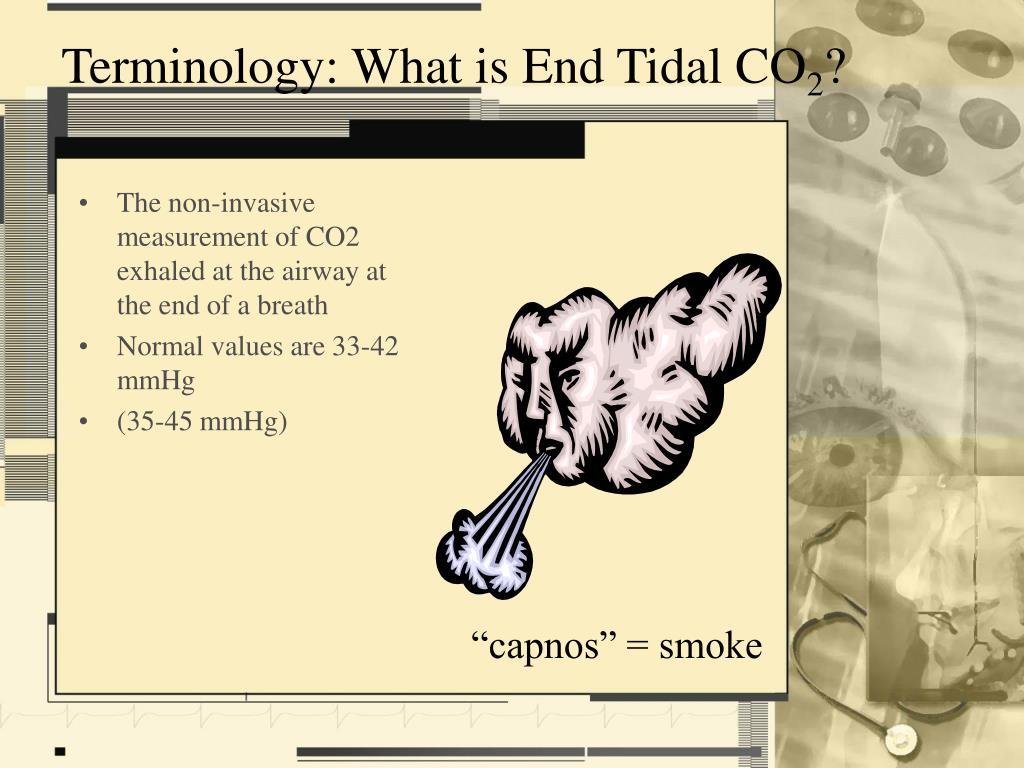
This could be a precursor for capnography being accepted as standard of care during sedation procedures in the near future. Similarly, several recent studies have shown the benefit of capnography in identifying events that can potentially lead to hypoxia during procedural sedation. The value of capnography was recognized in the operating room settings prior to being adopted as standard of monitoring during anesthesia procedures. Others look for evidence to determine if capnography has truly any beneficial role to play in sedation procedures outside of the operating room. Capnography is routinely used in patients undergoing cardiac electrophysiology studies and ablation, ICD placement and testing at our institution. Policymakers who understand the potential benefits and strides made in the operating room by capnography, logically recommend and extend its use to areas beyond the operating room to enhance the safety of patients undergoing sedation procedures. Capnography could provide early warning in identifying such respiratory or airway problems in advance so that corrective intervention can be undertaken before hypoxia ensues. It is not uncommon for anesthesiologists to be called in urgently to intervene under these circumstances. The delayed identification of airway problems leads to a delayed intervention. Occasionally endoscopies performed via the upper airway can also result in airway obstruction. During this state of sleep, airway obstruction or hypoventilation may occur that may not be detected until hypoxia occurs as is indicated by pulse oximetry. Although the aim of the conscious sedation nurse/personnel is to provide conscious sedation, the line between conscious sedation and sleep is very narrow and the patient drifts quite often into an unconscious state.

Presently, several procedures are being performed under sedation outside of the operating room. Examples include the use of capnography in the EMT / ambulance services for monitoring ventilation, and emergency medical rooms for procedures and sedation. Because of this, care- providers have been encouraged to extend the benefit of capnography to areas beyond the domain of anesthesiologists. Capnography serves as a warning device by instantly drawing the anesthesiologist's attention to the events that could potentially lead to hypoxia, if uncorrected. One of the greatest assets of capnography is that it can identify situations that can potentially result in hypoxia. Hypoxia is our primary concern during anesthesia, and therefore, by all means, any situation that results in hypoxia is avoided. See ASA standards, physics, physiology and clinical applications of the website (for other details on capnography.Ĭapnography has evolved into a standard of monitoring during anesthesia because it has proven itself to be a valuable tool in recognizing ventilatory and circulatory events that could potentially lead to deleterious effects. It is only a matter of time that capnography will find its way to becoming incorporated as a standard of practice for monitoring ventilation during sedation procedures. The value of capnography is well appreciated during anesthesia as an airway and ventilation monitor so much so that it has become a standard of practice in the operating room. To detect apnea or hypoventilation during procedural sedation, a specific monitor of ventilation is required. Hence it is obvious that some type of ventilation monitoring is required to safeguard against hypoxia during sedation procedures outside of the operating room. However, these agents can result in apnea and hypoventilation. In addition, endoscopic physicians are preferring to use hypnotic agents such as propofol, for quick recovery and discharge to reduce heath care cost. Thus it becomes all the more necessary to provide a ventilation monitor to enhance patient safety in areas outside of the operating room. Moreover sedation procedures are performed by non anesthesiologists at remote from 'OR locations' (operating room), who may not be as well experienced and adept as anesthesiologists, in recognizing airway obstruction, apnea and hypoventilation.

Supplemental oxygen can mask apnea or hypoventilationĪ Preponderance of evidence suggests that procedural sedation is associated with undetected apnea or hypoventilation that can result in oxygen desaturation. Pulse oximetry is a monitor of oxygenation


 0 kommentar(er)
0 kommentar(er)
